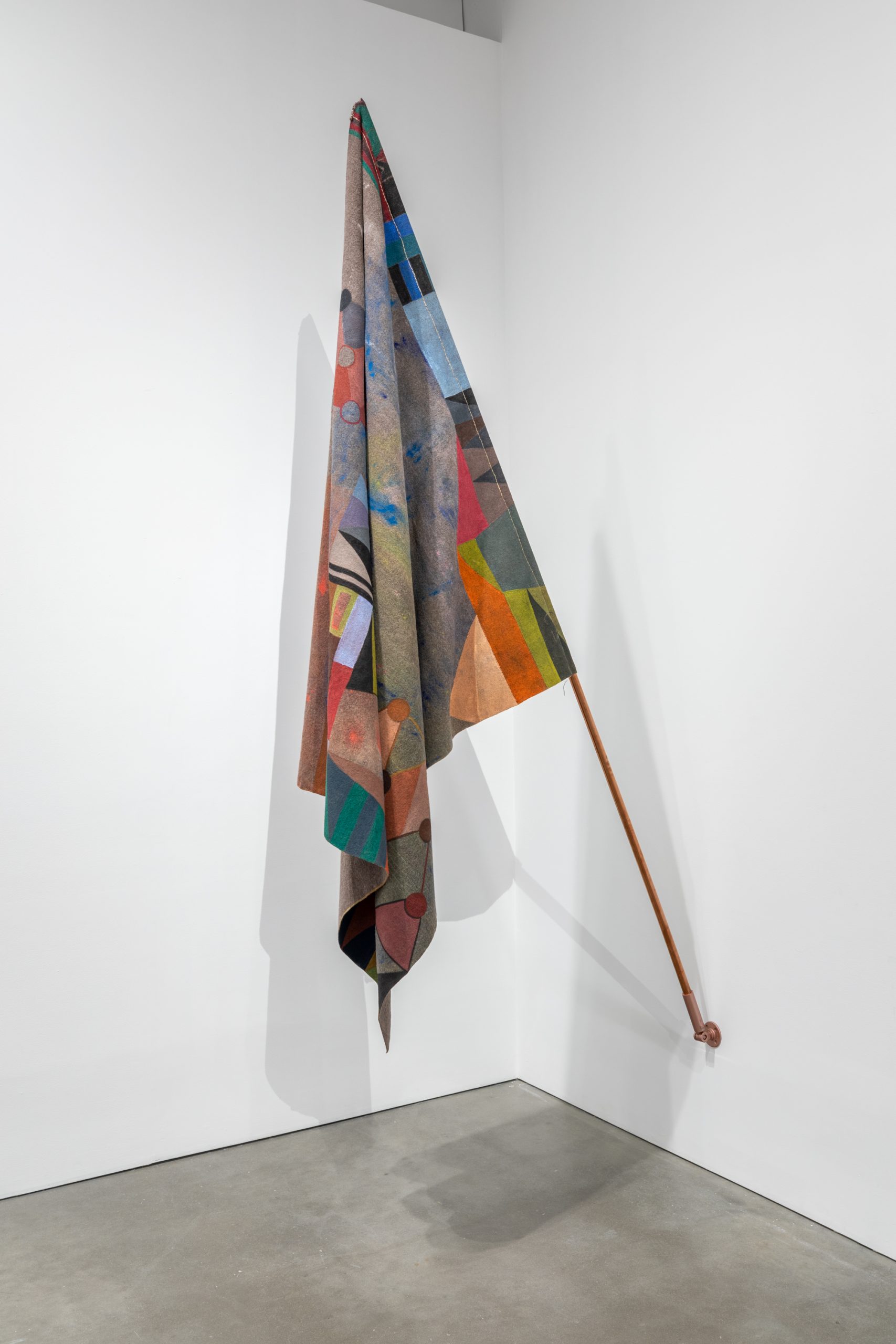
Jeffrey Gibson, Flag, 2012. Recycled wool army blanket, acrylic paint, steel hardware, copper conduit pipe, and artificial sinew. 108 × 18 × 62 inches (274.3 × 45.7 × 157.5 cm). Gift of Fotene Demoulas and Tom Coté.
Whether in painting, sculpture, fabric, text, or performance, Jeffrey Gibson’s mixed-media work draws on a wide swath of visual languages, from popular fashion and queer culture, to American modernism inflected through Cherokee and Choctaw aesthetic traditions. Trained as a painter, Gibson describes his approach to the act of painting as akin to beadwork and weaving: “In my head, I [am] applying paint as if I were creating a woven fabric or adorning a textile.” Early in his practice, Gibson expanded on this technique further by incorporating different materials and objects, such as beads, glass, blankets, and metal jingles into works that mixed different aesthetic traditions. Gibson is interested in this hybridity as a way to counter dominant narratives of Native life and community in the Americas, particularly the prevalent misconception that Indigenous art traditions are fixed in the past, rather than within a continuum of adaptation and innovation. “It’s not just that we’ve survived,” Gibson reflects, “there are moments in which we have thrived, we’ve found happiness, we’ve found joy, we’ve found celebration. We’ve always carved out space for ourselves.” The flag, a form of political iconography and a recurring motif in the artist’s practice, is one lens through which Gibson investigates these claims to place, land, and sovereignty to visually critique narratives of settler colonialism. Layering vibrant geometric blocks of color painted on one side of a found wool army blanket, Flag reflects Gibson’s signature visual language and proposal of creative futures for the artistic act through mixed art traditions and their associations.